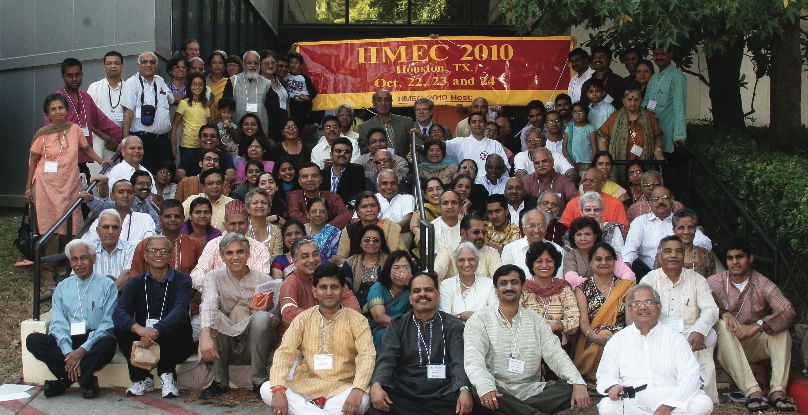BY TEJAS DAVE
I have often heard the question, “why do we need temples when God is said to be omnipresent, existing everywhere?” Let me answer by saying this: air is everywhere, but we still need a fan to feel that air. God is everywhere, but we need a mandir to feel God’s presence.
Our Hindu Dharma has made tremendous contributions and progress within American society since the introduction of our eternal religion here by Swami Vivekananda over a century ago. Fewer than 20 years later, the United States saw the establishment of its first mandir, the Vedanta Center in Boston, by Swami Paramananda. In the 100 years since then, more than 500 mandirs have been built across the United States and Canada, serving the religious needs of over two million Hindu Americans.
These temples, 10,000 miles from the Hindu motherland, have become sanctuaries for prayer and centers of devotion. In addition, they provide a haven for celebrations, festivals and other customs toward the continuation of our heritage. Mandirs serve to inspire and unite the Hindu community–recent immigrants as well as those born in America.
Our temples also address other challenges faced by Hindus born away from their ancestral home–the need to inculcate Hindu philosophy in the new generation and to hold children’s classes to impart Vedic knowledge. As a result, our American mandirs have become centers of learning.
And yet, while these great strides have been made, mostly by first-generation Hindu Americans, the wheel of time continues to turn. Soon it will come time for a new generation to assume leadership of Hindu mandirs and organizations and expand them even further, to adequately fulfill the needs of an ever-growing population. It is for this reason that the Hindu Mandir Executives’ Conference (HMEC) was convened. It was not to reminisce upon the past, but to envision the future. The purpose of the conference is to build a better future, a future that continues to be protected by the umbrella of Sanatana Dharma.
I would like to make it clear that while we seek to continue our Hindu faith into the future, we must also accept the existence of all other religions. In his 1893 address to the World Parliament of Religions, Swami Vivekananda stated that all paths eventually lead to the same goal, and that is God. We must embrace the philosophy of vasudhaiva kutumbakam, “all mankind is one family.”
As we approach this future over the next few years, we must ensure that temples do not become simply architectural marvels for society to gawk at while passing on the road. Temples must retain their sanctity. An electric fan, no matter how expensive, will do no good if it is not plugged in. Similarly, temples must remain connected to their source of energy, God, through the continuity of religious practices and social services. Service to man is service to God.
The purpose of the HMEC is to understand these issues and the rapidly changing needs that our community faces. As our numbers continue to grow and our age spectrum continues to broaden, it will be necessary to further enhance the mandir’s role in our lives. For the torchbearers of Hindu tradition and current leaders of Hindu temples, it is now time to search for, nurture and train the protectors of this legacy into the future. And for college and high-school students, such as myself, it is now time to understand the rich and vast culture that we are charged with sustaining. It is time for an active effort to enfranchise and empower the next generation of leaders.
This conference has taken big steps toward that goal. We, the Coalition of Hindu Youth, the future of this community, now stand united, with a clear understanding of what we must do. Throughout the conference we voiced our opinions about and learned the value of these mandirs, and we have made these mandirs our own. Now it is up to us to take the torch passed to us by our role models, the first-generation Hindu Americans, and ensure that the flame of Hindu unity and spiritual prosperity will be everlasting.
Let me end with the theme of the conference, which comes from the Rig Veda: “Let us be united. Let us speak in harmony. Let our minds apprehend alike. Common be our prayer; common be the end of our assembly; common be our resolution; common be our deliberations. Alike be our feelings; united be our hearts; common be our intentions; perfect be our unity.”
Learn more about the Hindu Mandir Executives’ conference at hmec.vhp-america.org [http://www.hmec.vhp-america.org] and the Coalition of Hindu Youth at www.chynetwork.org [http://www.chynetwork.org].
Tejas Dave, 17, attends high school in Pearland, Texas, where he is vice president of his school’s speech and debate team. He is a volunteer teacher for the Sri Meenakshi Temple’s Vedic Heritage School and coordinator for the temple’s annual youth camp. Tejas speaks about Hinduism on the Voice of Sanatan Hinduism and Sri Meenakshi Temple radio shows. E-mail: tejas _@_ chynetwork.org
